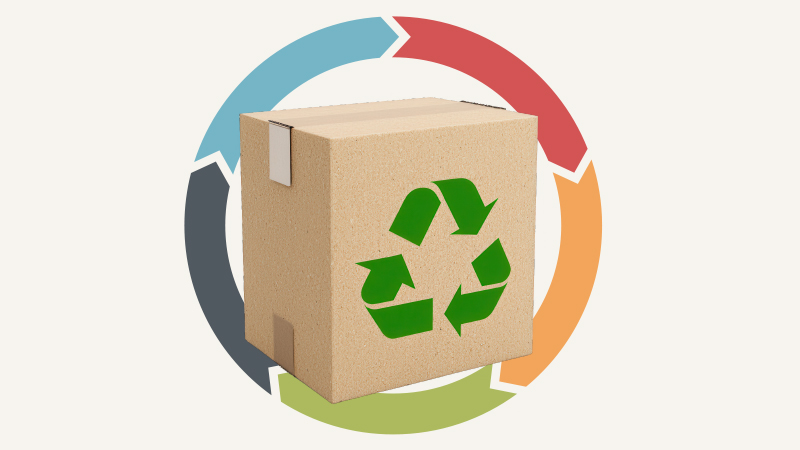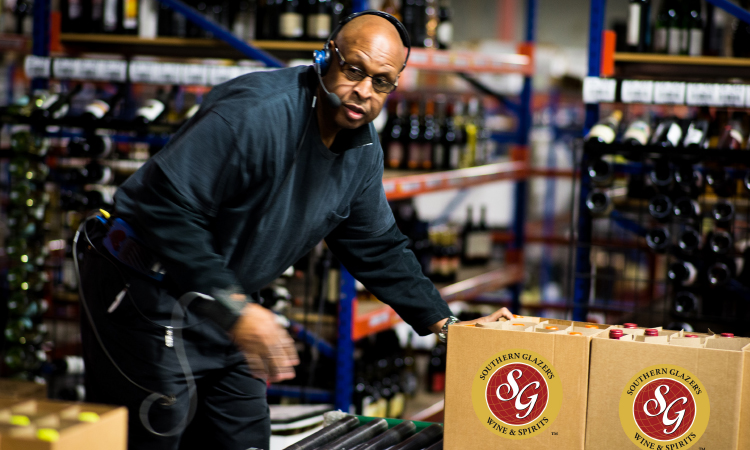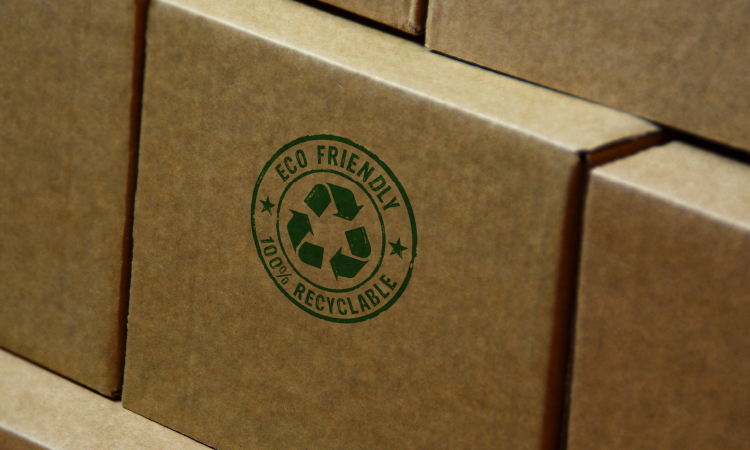5 Key Steps to a Circular Supply Chain

Shippers looking to reduce waste should prioritize these critical components for traveling a successful path to circularity.
Pursuing and managing a circular supply chain—one that minimizes waste by keeping materials and goods in use as long as possible, rather than discarding them prematurely—is becoming increasingly compelling to shippers.
“A circular supply chain lets you turn waste into value,” says Disney Petit, CEO and founder of LiquiDonate, a San Francisco-based company that automates donation workflows, reporting, and nonprofit matching.
“Instead of throwing away unsold or returned items, you find a second life for them—through donation, reuse, or recycling,” Petit says. “It’s better for the environment, saves companies money on landfill fees and reverse logistics, and builds brand trust with customers who care about sustainability.”
A linear supply chain that simply ends at delivery or the point of sale incentivizes brands to sell a product—not to ensure it performs.
“When brands stay connected to products after the point of sale, they’re incentivized to build products that actually solve the problem we buy them for, for as long as possible,” says Eric Casavant, director of technical marketing at Wiliot, a San Diego-based company that develops IoT technology for supply chains and asset management.
“Companies can deliver upgrades, monitor usage, and proactively support the customer,” he adds. “Businesses also have a platform to build a relationship with customers, which shifts the business model: Products are built to perform, not just sell.”
Petit is among those seeing sharply growing interest from shippers in adopting a circular supply chain. “Over the past 12–18 months, we’ve seen a real shift,” she says. “Retailers are being held accountable for waste—by customers, investors, and their own employees. At the same time, they’re looking for cost savings. Circular supply chains help with both.”
With that in mind, here are five critical steps that can help guide shippers in turning a linear supply chain into a circular one.
1. Identify the Best Opportunities — With the Help of Visibility

LiquiDonate contributes to a circular supply chain by diverting excess, returned, or unsellable goods from landfill and redistributing them to nonprofits, schools, and communities in need.
Start with a cost-benefit analysis to find the best opportunities for circularity. Materials that companies already use in their supply chains are often overlooked.
“Examine the materials a company already has in its supply chain and start looking at the cost of extracting and receiving them versus the cost of recovering those materials domestically and reintegrating them,” recommends John Holm, senior vice president of partnership development at Pyxera Global, where he leads the organization’s inclusive circular economy strategy.
“We already have reverse logistics for products—what about reverse logistics for materials?” he asks. “Identifying areas where costs are minimal but materials can be recovered at scale is just smart.”
Start simple and focus on systems that make sustainability actionable. “The bottom line: If you want a circular supply chain, you have to design for it,” Petit says. “Make it easy for teams to act sustainably—not just talk about it.”
To understand where actionable opportunities exist, visibility into inventory gaps is critical.
“You have to know where your excess lives,” Petit says. “That includes customer returns sitting in homes or warehouses, aging inventory in retail backrooms, marketing samples, and leftover materials from events and pop-ups.”
For instance, one of LiquiDonate’s partners, Room & Board, discovered that it could redirect items previously considered “un-donatable”—such as retired store fixtures and incomplete pieces—to nonprofits, effectively reducing waste and supporting community needs.
Shippers should also evaluate how recycling is prioritized, and whether a better solution exists.
“Recycling is part of the solution and certainly a better pathway than landfilling or incineration without energy recovery,” notes Kevin O’Donnell, vice president of corporate sustainability at Southern Glazer’s Wine and Spirits, the largest wine and spirits distributor in the United States.
“But recycling still only recovers pennies on the dollar compared to reducing waste generation or designing for reuse,” he says.
“While all have a place in the transition to circular supply chains, to tweak the three Rs: Recycling is good, Reuse is better, and Reduction is best—for both business and the environment,” O’Donnell adds.
2. Create ‘Virtuous Loops’

Room & Board, a retailer specializing in modern furniture and home decor, is committed to using 100% sustainably sourced wood. It makes more than 90% of its products in the United States, supporting local economies and reducing transportation-related emissions.
A foundational concept of circularity is “beginning with the end in mind,” one of Stephen Covey’s habits of highly successful people.
Companies that successfully pursue a circular supply chain create “virtuous loops” as early as possible, emphasizing network optimization, tighter supply chains, more resource-efficient buildings, and more efficient transport logistics.
“While it’s helpful to harvest the quick wins with clear ROI, don’t stop there,” O’Donnell advises. “Take a holistic view of the system and design in circularity from the start. Consider capital investment, procurement, and long-term business planning through a circular lens.”
Changing the company mindset to prioritize circular solutions is essential. For instance, it’s a mistake to assume that donation is extra work. “When done right, donation is easier than liquidation and more aligned with your brand values,” Petit says.
Disposal is often the default because it’s already built into existing systems. “To shift to a circular supply chain, donation and reuse need to be the default, not the exception,” Petit says. “That could mean flagging products for donation during return intake or integrating donation logic into reverse logistics systems.
“We’ve seen partners reroute returns to schools, shelters, and mutual aid organizations just by tweaking existing standard operating procedures,” she says.
Sticking with the familiar can be a barrier. For example, transitioning to circular packaging—durable, reusable, returnable, and refillable—is an often-overlooked but vital step.
“Circular packaging costs more upfront but provides rapid ROI and significant environmental gains,” O’Donnell says. “That’s not to say any of this is easy. There’s often more talk than action—a circularity promise versus reality gap.”
3. Consider—and Incentivize—Your Partners

At Southern Glazer’s Wine & Spirits, a comprehensive supply chain strategy emphasizes waste reduction, resource optimization, and sustainable logistics.
Shippers can’t navigate a circular supply chain alone. Partners can help make the process smoother and more scalable.
“This can’t all fall on your supply chain team,” Petit says. “You need platforms that automate everything from nonprofit matching to freight coordination to real-time reporting.”
O’Donnell points to the Ellen MacArthur Foundation as a key thought leader in the space and says major consultancies are building out circularity practice areas. He also sees increasing investment from venture capital and private equity in scalable, innovative solutions.
Working collaboratively with upstream and downstream partners can unlock powerful economies of scale. “That’s when things start becoming profitable,” Holm says. “Working with both upstream and downstream partners uncovers real opportunities.”
Everyone in the product’s journey must have strong incentives. “Third-party supply chain companies need to be compensated to prevent damage and maximize returns,” Casavant says. “Customers need incentives, such as deposits or brand rewards, to care for and return products.”
4. Track Impact and Ensure Compliance

By minimizing environmental impact and conserving resources eco-friendly packaging contributes to a sustainable supply chain.
As with all aspects of the modern supply chain, data is essential. Modeling and measuring ROI is crucial.
“Businesses need to model break-even points for recovery, measure each link’s performance, and continuously adjust incentives and messaging,” Casavant says. “When done well, the payoff is significant, with increased brand loyalty, higher customer lifetime value, and longer-lasting engagement.”
In the case of donations, traceability is key for ESG reporting and tax benefits. “Donation is great for ESG metrics, community impact, and your tax position, but only if it’s traceable,” Petit says. “Ensure your systems, or your partners, provide SKU-level reporting, donation receipts, and audit-ready documentation.”
Cutting corners on traceability and automation is costly long-term. “The upfront investment is often less expensive than the lost inventory, assets, or credibility when you can’t prove what happened,” Casavant warns. “Circularity adds complexity in terms of more touchpoints and potential disputes. That’s where traceability pays off: It reduces manual work, smooths returns, and speeds issue resolution.”
5. Empower and Align Your Teams
The biggest barrier to circularity is internal alignment. “If your merchandising team is working toward markdowns, operations is focused on speed, and ESG is off to the side, it’s hard to execute,” Petit says. “Donations can feel messy without the right tools.”
Circularity should be a cross-functional goal. “The best programs come from collaboration among operations, legal, finance, brand, marketing, and ESG,” Petit says.
Holm agrees that understanding internal operations and fully committing to circularity are essential. “Materials can feel like the most challenging part of the supply chain,” he says. “People get lost or annoyed. Thinking of the supply chain not as a confusing mess of shiny objects but as a value-adding business model changes everything.”
“Circularity is not just a green buzzword,” Holm adds. “In many ways, it’s a cost-efficient way to make the most of the materials you’ve already sourced. That’s the shift in thinking we’re working toward.”
In the end, circularity doesn’t have to be complicated, especially when considered alongside its advantages. “If you have the right partners and a little buy-in, you can make a real impact, and track it,” Petit says. “What used to take months of manual work, we can now automate in minutes. That’s how we move from good intentions to real outcomes.”
Get Ahead of the Circularity Curve
By Mauro Erriquez, Senior Partner; Peter Spiller, Partner; and Johan Bengtsson, Partner, McKinsey & Company
Disruption in global trade and supply chains presents a critical opportunity for organizations to embed more circular business practices.
The case for circularity is compelling: reuse, recycle, and reintroduce materials to reduce costs and boost performance. McKinsey research finds that $2.6 trillion worth of material in fast-moving consumer goods—80% of material value—is discarded. Another study estimates that a circular economy could unlock over $1 trillion in revenue in Europe alone by 2050.
Companies that embrace environmental, social, and governance (ESG) metrics will also be better positioned to navigate regulatory changes, such as Europe’s Carbon Border Adjustment Mechanism (CBAM) and Emissions Trading Schemes (ETS 1 and 2). Sustainability rules may significantly raise input costs—another incentive to rethink resource use.
One core challenge: Current systems are built for linear use of resources. Circularity, by contrast, aligns with strategic priorities such as resilience, efficiency, and carbon reduction. With geopolitical tensions and shifting trade dynamics, circularity offers real, practical benefits.
Global businesses need new skills—and a renewed sense of purpose. Companies often overlook how purpose and engagement drive transformation. A North American heavy-equipment manufacturer, for example, saved $100 million and reduced CO2 by 40,000 metric tons through carbon-focused workshops, which also gave employees a meaningful cause to support.
Labor markets are tight, and Gen Z workers consistently cite “meaningful work” as a key factor in employment decisions. A focus on sustainability can help attract and retain talent.
There’s no single entry point to circularity. Some organizations start with a carbon lens, others with cost—but with the right teams and innovation, the two quickly align. One global automotive manufacturer used carbon targets to drive material innovation and redesign, ultimately doubling savings from earlier efforts.
Circularity should be part of broader business transformation. Consider product returns: disassembly, reuse, and resale require redesign, clear guidance, and operational overhaul. It’s a mini-industrial revolution.
Procurement, logistics, IT, and supply chain professionals are uniquely positioned to lead. They bring the technical and operational expertise needed for transformation. Circularity isn’t greenwashing—it’s essential for long-term success, competitiveness, and resilience.

